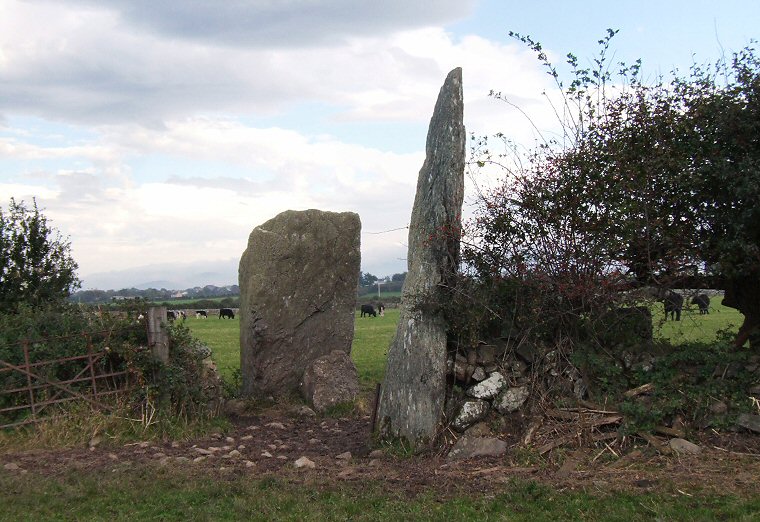 The pair of standing stones known as Bryn Gwyn, are they part of an alignment or remains of a stone circle? |
There is very little modern
information about this pair of standing stones located on a small plateau
of land to the south of the river known as the Afon Braint in the southeast
of Anglesey. What can be seen today are two of the largest stones on
the island, one 3 metres tall, the other a massive 4 metres tall that
form a gateway in a hedge between two pastures. To try and figure out what these stones represent we must rely on antiquarian accounts from the 17th and 18th century. The first report from the late 17th century by the rector of the nearby village of Newborough states that about twelve stones stood on the site but he gives no indication whether they formed a circle or row. The second account is by Rev Henry Rowlands who in 1766 recorded three upright stones plus the base of a fourth and suggested that they were the remains of a stone circle of up to nine original stones that he estimated had a diameter of about 12 metres. A final report from the end of the century states that two stones remained standing, the rest having been pulled down by locals looking for buried treasure. Whether or not the stones did indeed form part of a stone circle remains unanswered although recent excavations uncovered a pair of stone stumps and the pit of another missing stone, however the small diameter of the circle suggested by Rowland would seem to be very unusual for stones of this size. Just over 300 metres to the northeast is Castell Bryn Gwyn a circular Iron Age / Romano-British defended site that is thought may have started life as a Neolithic henge monument while a little further northeast another stone circle was recorded by Rowland at Tre Dryw Bach of which nothing now remains. Continuing northeast we next come to Caer Leb settlement site which although dated to the early centuries AD may have originally been occupied in the Iron Age while yet further northeast a slight bend in the Afon Braint is marked by another two standing stones. Taken together it would seem that the raised land to the south of the river valley was the focus of much activity during the prehistoric period. Probable Date: Bronze Age |